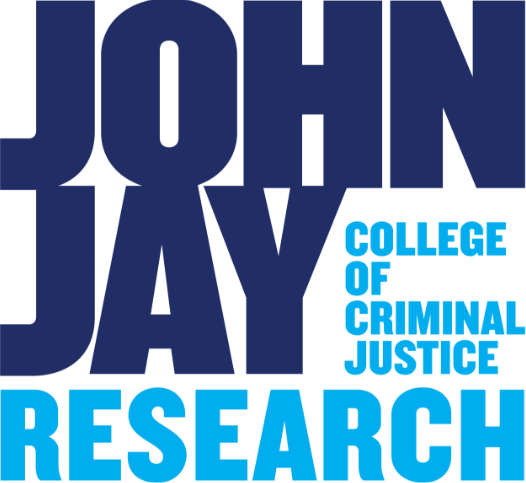The Politics of Population Change
From environmental disaster to gentrification, John Jay researchers are studying human migration
Researchers: Christian Parenti, Jamie Longazel, Shonna Trinch, Edward Snajdr
Author: Chase Brush
In a small village in rural Mexico, a community already destabilized by political and economic policies far outside its control descends into poverty. For generations, the majority of the village’s members relied on farming for their livelihood, but a prolonged drought — brought on by human-induced climate change — has turned the soil to dust. Without a means to make a living, and with violence in the community mounting, a handful of individuals and families make an impossible decision: they flee.
Many migrate north, hoping to find better jobs and safer conditions across the border in the U.S. Some settle in small rust-belt towns, others on the outskirts of major metro areas; in either place, they’re forced to deal with xenophobia and racism from a white majority. But they manage to build better lives for themselves, until one day, years or maybe generations down the road, rent prices in their neighborhood skyrocket, driven up by an influx of wealthier residents. So they’re forced to move again.
To most people, the topics central to this story — immigration, gentrification, and climate change — can seem like disparate issues. But to researchers at John Jay College of Criminal Justice, they are part of a closely interwoven web of problems, a chain of causation that drives population changes across the globe. Often, this chain leads to poverty, displacement, and violence for those caught up in it.
Climate Change & the Geography of ViolenceDr. Christian Parenti, an associate professor of economics at John Jay, has another name for this causal chain: he calls it the “catastrophic convergence.” The idea describes how seemingly disparate problems—from the political, to the economic, to the environmental—can intersect and coalesce, ultimately resulting in even greater crises. “By catastrophic convergence, I don’t mean that several disasters are happening simultaneously,” Parenti says, “but that the problems compound and amplify each other.”
A journalist-turned-academic, Parenti hit upon this concept while reporting over the years for outlets like The Nation on issues like the U.S. prison industrial complex and the War on Terror. One major lesson came in 2005, in Afghanistan, where climate change—in the form of erratic seasonal rainfall—had forced local farmers to turn to cultivating drought-resistant poppies despite a crackdown from NATO forces. This in turn compelled the farmers to support the Taliban, which defended poppy cultivation — ultimately exacerbating conflict in the region.
“So you see, there’s a kind of chain of causation, from the environmental crisis, to the choice of their crops, to which side of the conflict they’re going to support,” Parenti says.
Parenti went on to include this anecdote in his 2011 book, Tropic Of Chaos: A New Geography of Violence, which describes how climate change is exacerbating already dire political and economic crises across the globe. Most of these crises are relegated to the Global South, where decades of Western intervention—characterized mainly by failed neoliberal policy, Parenti argues—have led to systemic poverty and political destabilization. “In doing this conflict reporting, the environmental question kept appearing,” he says. “You wouldn’t want to reduce that conflict to that issue. But it is a contributing factor.”
More recently, Parenti has turned his attention to examining ways to address the climate crisis through more sustainable economic and environmental policy. “The project we face as modern civilization is essentially a process of reindustrialization,” he says. “We have to euthanize the fossil fuel industry and build out the clean energy sector.” To do that, Parenti has advocated for reorienting government procurement away from fossil fuels, effectively using public funds to create a market for green energy.
Parenti has also advocated for using history as a guide in this effort. In his latest book, Radical Hamilton: Economic Lessons from a Misunderstood Founder, Parenti re-examines the work of Alexander Hamilton, often portrayed as a central architect of the U.S.’s capitalist economy, and recasts the founding father as a proponent of federal intervention. “The reality of capitalism is that the history is actually much more socialistic than we think,” Parenti says. “So my argument is that the only way we can achieve this process of green re-industrialization is through the efforts of a developmentalist state.”
Immigration & ExploitationAs Parenti notes in Tropic of Chaos, the implications of climate-induced strife aren’t limited to the Global South. While countries in the Global North—such as the U.S., Canada, and much of Europe—may be insulated from the immediate impacts of climate change, they too will face cascading effects, mainly in the form of immigration. “Part of what is already happening, and what is going to keep happening, is that people in countries in the Global South are going to leave as their economies undergo tremendous stress,” Parenti says.
Associate Professor of Political Science Dr. Jamie Longazel is another expert at John Jay working at this intersection of politics, economics, and human migration. An immigration scholar and activist who is also part of the CUNY Graduate Center’s International Migration Studies program, Longazel studies how U.S. policy shapes the immigrant experience, often beginning far outside its own borders. Like Parenti, he too believes that decades of interventionist political and economic policy by the U.S. have helped to destabilize countries in places like Latin America, ultimately driving people out.
“If we look internationally, we can quickly see how our imperialism abroad is putting people in situations where staying alive is a challenge,” Longazel says. “And that’s prompting people to get up and move.”
Of course, the violence and hardship that immigrants are forced to endure doesn’t end at the border. A big part of Longazel’s work focuses on domestic immigration law in the U.S., and how it can inflict unseen traumas on migrants. “We’re talking about migration, people who left their homes to go somewhere else,” Longazel says. “But one of the things that characterizes the migrant experience in the U.S. is immobility.”
Longazel first tackled this subject in his 2017 book, Undocumented Fears: Immigration and the Politics of Divide and Conquer in Hazleton, Pennsylvania. Based around the small rustbelt town, the book examines a controversial law passed in 2006 that laid out penalties for renting to or hiring undocumented immigrants in the city, and even declared English its official language. “I learned that people were really prone to be nostalgic in the city, and how that nostalgia is really tied to uncomfortability around immigrants,” Longazel, himself a native of Hazelton, says.
Longazel’s most recent project, a collection of essays about the migrant experience that he co-edited, widens this lens even further. Titled Migration and Mortality: Social Death, Dispossession, and Survival in the Americas, the book examines how restrictive immigration policies and the broader capitalist system in the U.S. can work to exploit migrants, depriving them of financial stability, dignity, and even health. “At the end of the day, a lot of the migration policy in the U.S. is about creating an exploitable labor force,” Longzel says. “And once the labor force is in, mobility is restricted.”
This includes everything from poor labor conditions for migrant workers, to the inability to obtain drivers’ licenses, to lack of access to health care. “I think rightfully most of the attention that is given to immigration and the harm that immigrants experience is usually on immigration law,” he says. “But when you open it up and look at something like health policies, a lot of those things are contributing to violence and death, too.”
In addition to highlighting these problems, Migration and Morality is also a call to action. Longazel himself is actively involved in this realm: he is the founder of Anthracite Unite, a collective trying to unite the working class across racial and economic lines in his native northeastern Pennsylvania, as well as a member of the Poor People’s Campaign: A National Call for Moral Revival, founded to carry on the legacy of Martin Luther King, Jr.
“We hope the book agitates people, and gets them to join movements and try to create fundamental changes that can create a better world,” he says.
Exclusionary Spaces & PlacesThe immobility and exclusion that Longazel talks about doesn’t only find expression in specific immigration law and policies, however. People from outside the U.S. who have long made the city their home increasingly face cultural exclusion in their adopted communities, in many cases driven more by gentrification than by xenophobia. Dr. Shonna Trinch and Dr. Edward Snajdr, both professors of anthropology at John Jay College, have found a novel example of this phenomenon in rapidly-gentrifying Brooklyn. Here, subtle changes to the physical environment are signaling a change in who is welcome in the neighborhood.
Before coming to John Jay, Trinch and Snajdr—a sociolinguist and a cultural anthropologist, respectively—had been doing fieldwork outside New York City. Snajdr, whose research covers social justice movements and activism across cultures, had been doing fieldwork in far-flung places like Bosnia and Kazakhstan; Trinch had done her own fieldwork in the southwest U.S., studying the challenges that Latinx women faced in reporting domestic abuse in the U.S. sociolegal system. But by 2006, the couple had moved to Brooklyn and turned their attention to what was happening in their own neighborhood. “And what was happening was gentrification — a lot of rapid changes taking place in the borough,” Snajdr says.
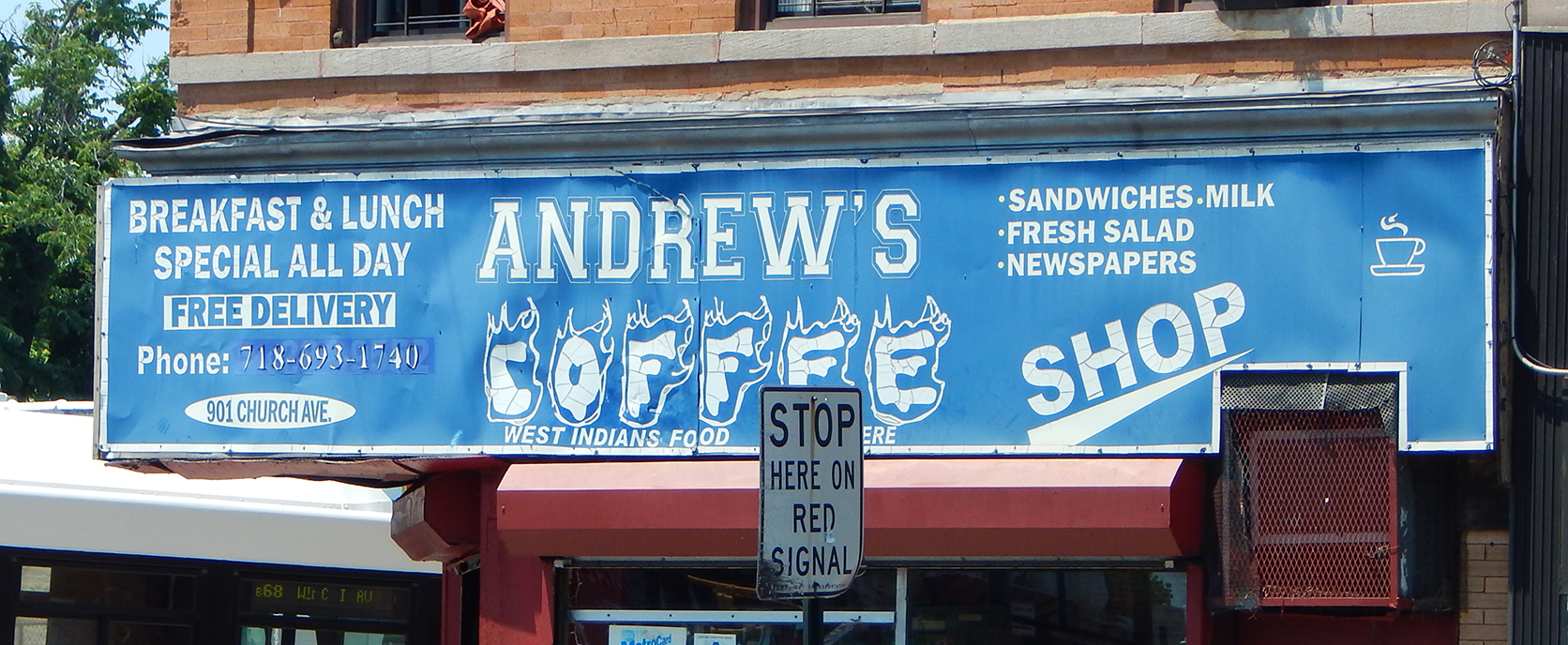
Andrew’s Coffee Shop, Brooklyn NY
While researching redevelopment issues surrounding the Atlantic Yards project in Brooklyn, Snajdr noticed that one of these changes had to do with signs — as in, storefront signs. All over the borough, he and Trinch found storefront signs crammed with text, often written in more than one language and with an aesthetic sensibility they were not familiar with. Following careful analysis of more than 2,000 storefronts, Trinch says they found these signs “were multi-class, multi-ethnic, multi-lingual, with really sincere expressions of identity.”
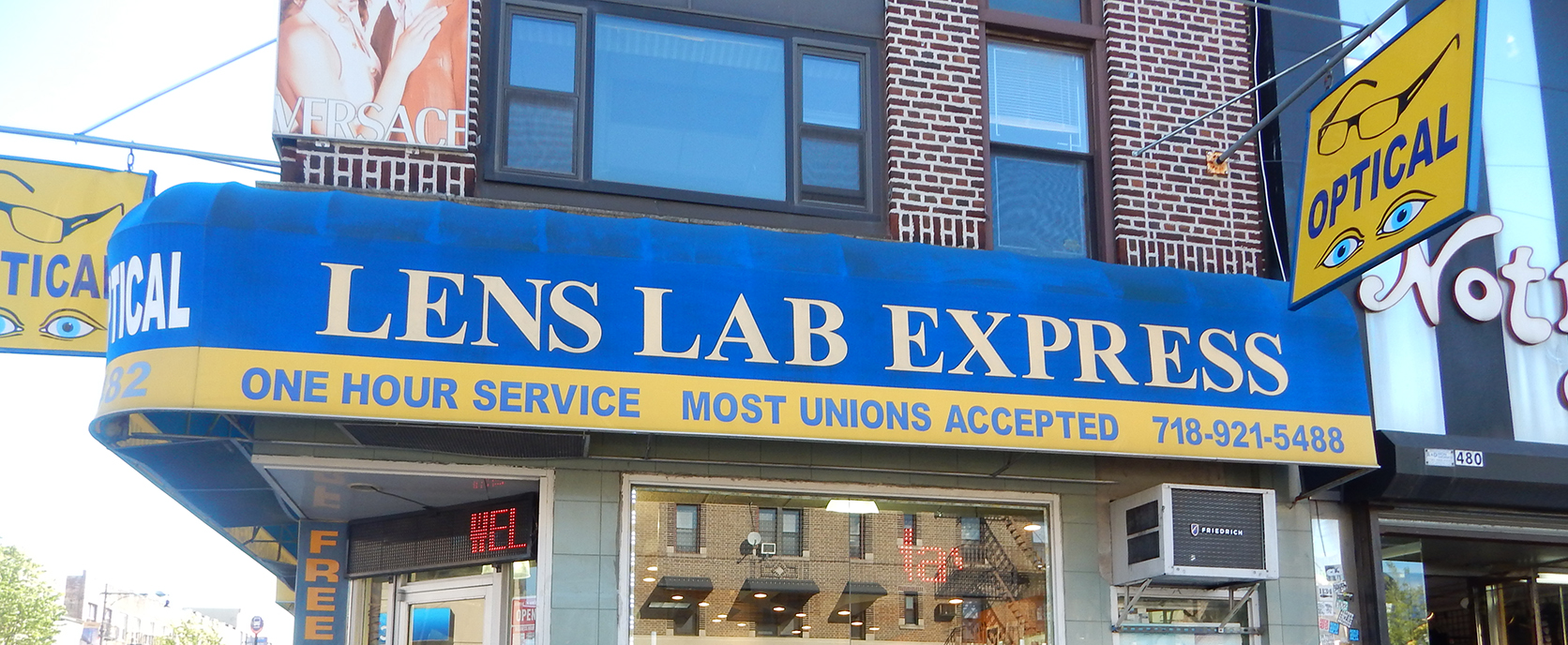
Lens Lab Express, Brooklyn NY
In more heavily gentrified areas, however, these “old-school” signs were disappearing, replaced by ones with more minimalist designs and obscure references. “Often they had cryptic words, or no words at all,” Trinch adds. “Some have no indication of what people are even selling.”
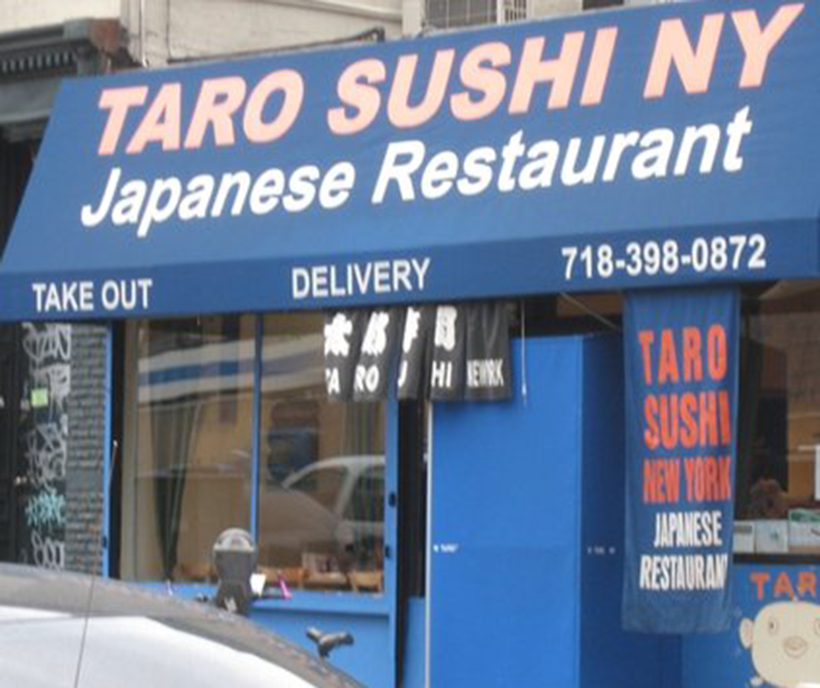 Taro Sushi and unidentified restaurant, Brooklyn NY |
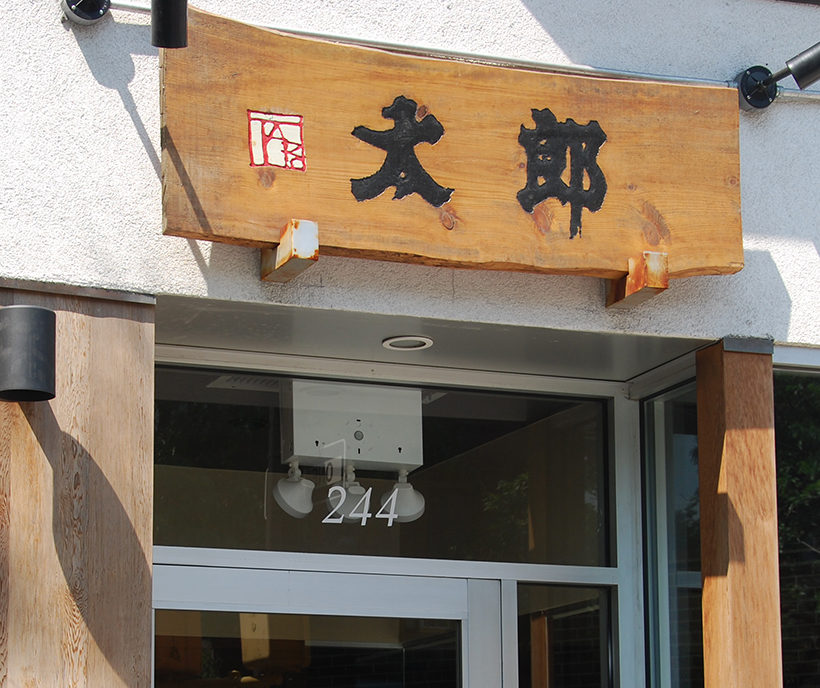 |
Trinch and Snajdr realized that these signs were communicating different messages to the community. “The old-school signs were trying to cater to as many people as possible, in a very sincere way,” Snajdr says. In contrast, “the new-school signage is very upscale, it is by and for gentrifiers,” Trinch adds. “It’s exclusive, and it’s exclusionary.”
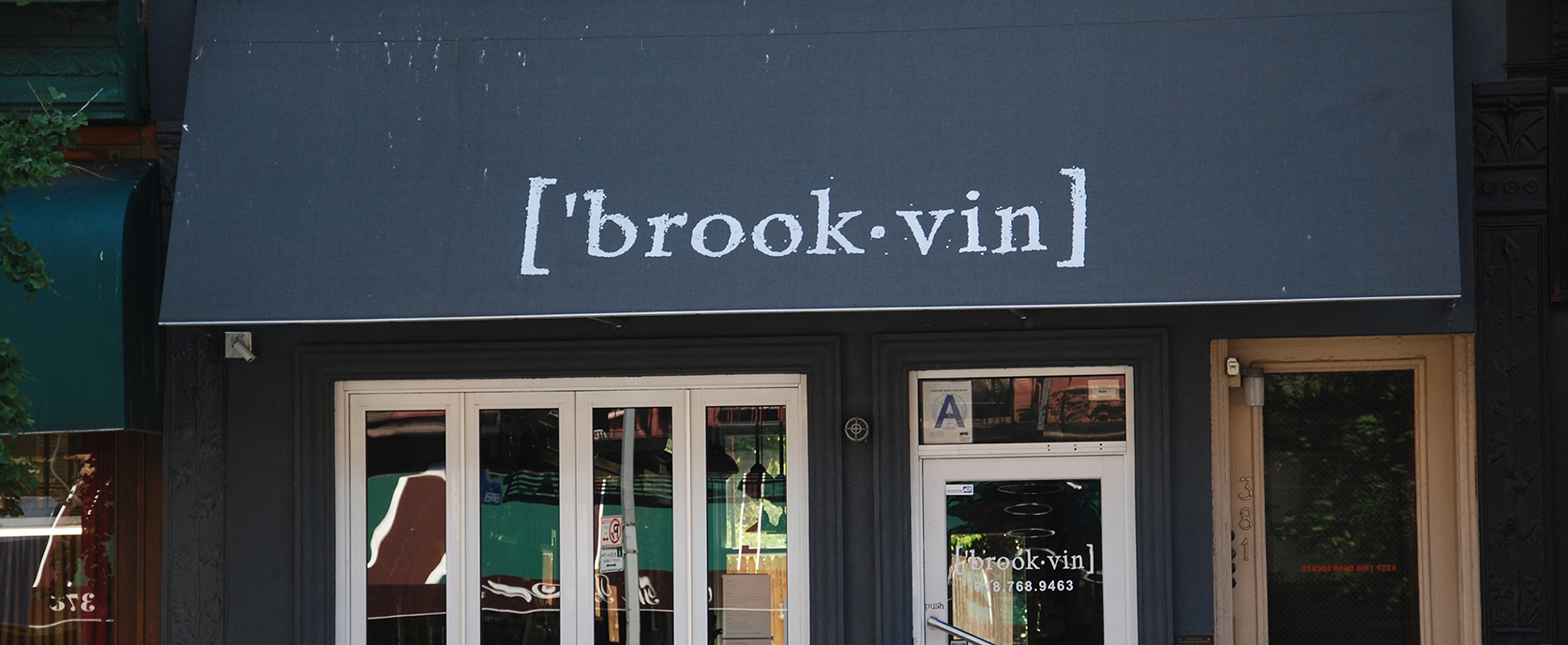
‘brook-vin, Brooklyn, NY
In addition to compiling a database of photos of these different signs, and with support from the National Science Foundation, Trinch and Snajdr also conducted ethnography, mapping, census data analysis, and interviews with neighborhood residents, city planners, developers and activists. They found that the results reinforced their impressions of the inclusion-exclusion dichotomy. Those results are discussed in their recent book, What the Signs Say: Language, Gentrification, and Place-Making in Brooklyn.
“We use the signs as a frame and as a symbol, to say that old-school Brooklyn had a place for everyone,” Snajdr says. “And we posit that that type of signage—the linguistic features of it, the symbolic elements of it, its aesthetics—are actually a model of diversity.”
Ultimately, by making people feel less welcome, Trinch and Snajdr say this kind of exclusionary place-making at the local level can become yet another driver of population change, another factor in Parenti’s concept of “catastrophic convergence.” And like Parenti and Longazel, Trinch and Snajdr believe that it’s up to policy-makers—as well as activists—to push for solutions that are more equitable for all.
“As we get rid of rent control, as we get rid of rent stabilization, we’re going to see New York City become less inclusive,” Trinch says. “But the tools are there. It’s just about whether or not anyone is going to say, we’re going to implement this so we can make space for everyone.”
Feature: Davide Bonazzi
